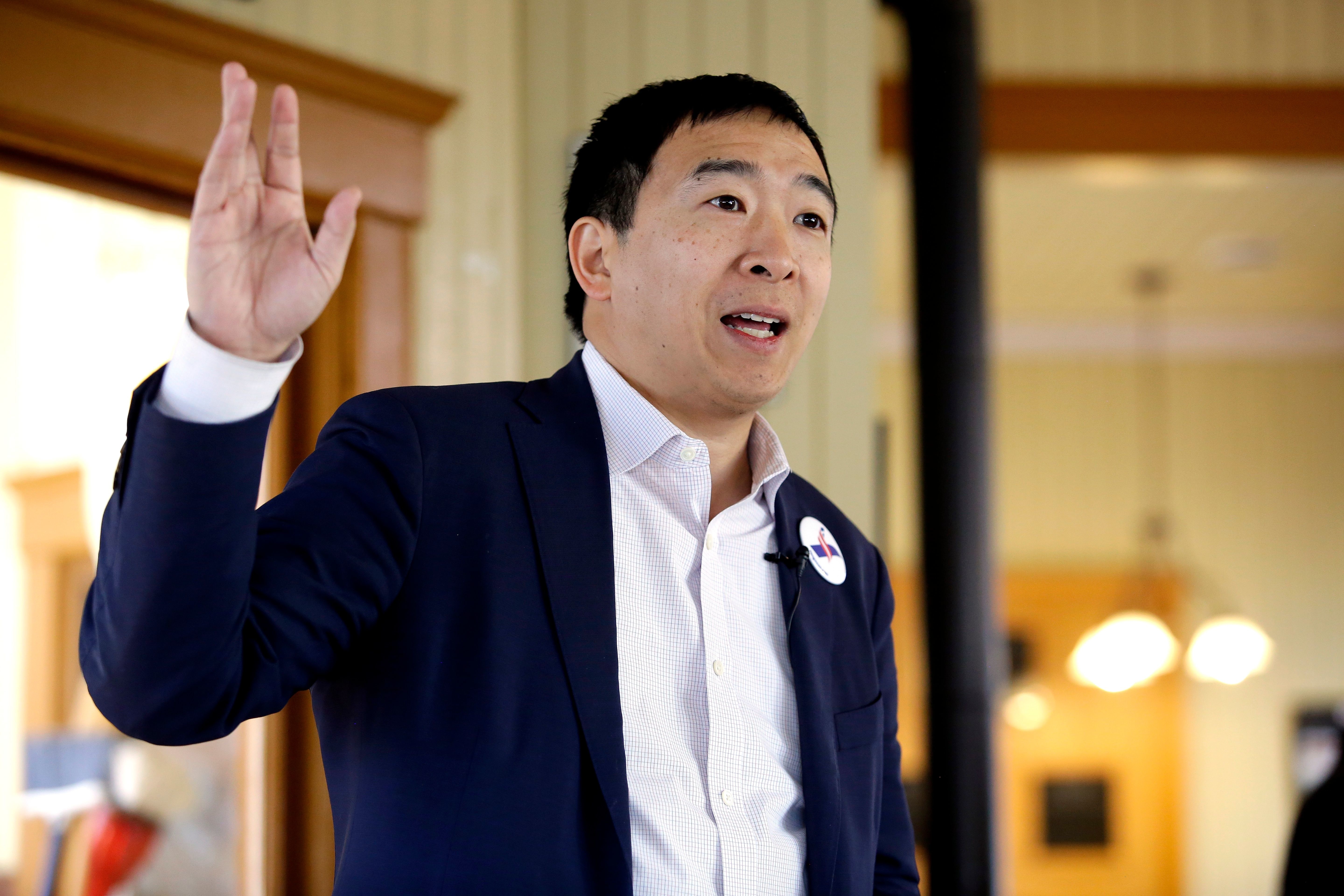Andrew Yang: Give truckers severance packages when driverless vehicles take over

Photo credit: ROSLAN RAHMAN / Contributor
- Andrew Yang is a 2020 Democratic presidential candidate who’s made technology and automation central to his campaign.
- Yang says the U.S. needs a plan for how to manage the upcoming loss of millions of American trucking jobs to self-driving vehicles.
- Yang wants to tax profits from self-driving trucks to give these laid-off truckers a “severance package.”
At the core of Andrew Yang’s 2020 presidential campaign is an existentially unsettling message: Automation is coming for our jobs and it’s going to restructure the economy. In fact, it already is, according to the candidate.
“Technology is now automating away millions of American jobs,” he said during a Democratic primary debate in June. “It’s why Donald Trump is our president today — that we automated away 4 million manufacturing jobs in Michigan, Ohio, Pennsylvania, and Wisconsin, and we’re about to do the same thing to millions of retail jobs, call center jobs, fast food jobs, truck driving jobs and on and on through the economy.”
The success of Yang’s campaign — which, to be sure, is relatively minor, considering he’s polling at about 3 percent as of August 22 — can be attributed in part to the fact that he’s offering a potential way out of this mess: give every American adult a universal basic income of $1,000 per month. That plan, as the Democratic hopeful recently described on his website, needs to give special consideration to the millions of Americans whose jobs will likely be automated sooner than others: truckers.
A statement on Yang’s campaign website reads:
“Over 3 million Americans work as truck drivers, and over 7 million are employed related to trucking activity. Self-driving truck technology is rapidly becoming sophisticated enough to replace these drivers, and the economy is not prepared to absorb the loss of so many jobs. Truck drivers are 94% male, average age 49, average education high school or one year of college – there are not necessarily other opportunities for them that will pay a comparable salary. Additionally, hundreds of communities are built around the trucking industry and those communities are also at risk from the coming automation.”
How can the U.S. “ease the transition” to self-driving vehicles, as Yang’s website describes? Tax profits earned from self-driving trucks to provide a severance package for out-of-work truckers.
“The estimated cost-savings and efficiency gains of automated freight are $168 billion per year which is enough to pay the truckers significant sums and still save tens of billions per year,” Yang’s website states.
Automated trucks: Blue-collar disaster or economic win?
Of course, what’s unclear is how accurate those estimates are, and how exactly Yang would go about taxing the self-driving trucking industry (though we do know who would get the ball rolling – the so-called “Trucking Czar” Yang would appoint if elected president). What’s more, Yang – the only candidate who’s made tech and automation central to his campaign — could be wrong about how imminent of a threat automation is to the economy. But recent developments in the industry seem to suggest it is, in fact, a looming problem.
American companies are already experimenting with self-driving trucks. In 2019, the United States Postal Service, UPS and Amazon worked with the self-driving trucking company TuSimple to run pilot programs that involved shipping cargo on self-driving trucks. In these test runs, the self-driving trucks operated at “Level 4” autonomy, as measured by the Society of Automotive Engineers’ “Levels of Driving Automation” — this means that the trucks drove automatically but there were, in this case, two people inside the cabin at all times, ready to take the wheel in the event of an emergency.
Before self-driving trucks can hit the roads in large numbers, they’ll need to pass a set of regulatory hurdles, and it’s unclear how long that would take. But on the technology side, the trucks could reach full autonomy by the end of 2020, according to TuSimple President Xiaodi Hou.





